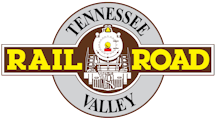SMOKE & CINDERS (2ND QUARTER 2017) – WHAT IT TAKES TO PUT ON AN EVENT

The Art of Hosting: A Peek into the Planning of Special Events at TVRM
‘The Tennessee Valley Railroad Museum (TVRM) is renowned for its railroad journey experiences. A critical element in keeping our guests intrigued and fascinated is our special events. These special events contribute to a significant portion of our visitor traffic and our revenue. However, what appears as an effortless event to our guests involves meticulous planning and dedicated supervision. This post aims to shed light on the tireless work that goes into orchestrating these special events.
Every special event at TVRM has an event coordinator who shoulders the responsibility of the event’s success. Our coordinators, such as Steve Freer for Day Out With Thomas and Jennifer Ennis for the Bunny Trains, put in hundreds of hours of preparation and planning.
For instance, Day Out With Thomas is a licensed event, requiring adherence to a detailed guidebook. This manual covers the minutiae of the event, from setting up stalls to engaging the visitors. For our Christmas themed rides, we also have a guide detailing decoration placement and other specifics. This ensures consistency and a high-quality experience for our guests year after year.
Event coordinator Trevor Lanier’s work involves scheduling entertainment and other crucial personnel months in advance. Currently, the planning and production for Railfest in September, Halloween Eerie Express in October, and North Pole Limited in November and December are already underway. These preparations also include analyzing feedback from staff and visitors from past years, using it to enhance the experience further.
To offer a glimpse into the preservation of history at TVRM, let’s look at the “Eden Isle,” a private car from 1917. The Pullman Company built it for the president of the Baltimore and Ohio (B&O) Railroad. This car, although standard for its time, boasted of luxurious features such as mahogany paneling, brass fixtures, stained glass windows, and even a call button system for summoning the secretary or porter.
The “Eden Isle,” like other artifacts at TVRM, tells stories and connects us to the past. The car, being entirely self-reliant with food, beds, and other amenities, showcases the grandeur of rail travel in the early 20th century. It was eventually donated to TVRM in December 1977, and we have preserved it, providing our visitors with a tangible connection to the past.
So, as we anticipate the upcoming special events, we remember that each event at TVRM is not just an occasion, but an experience – a journey through time. Each meticulously planned event allows our guests to immerse themselves in the rich history of rail travel, making their visit to TVRM a truly unique experience.
